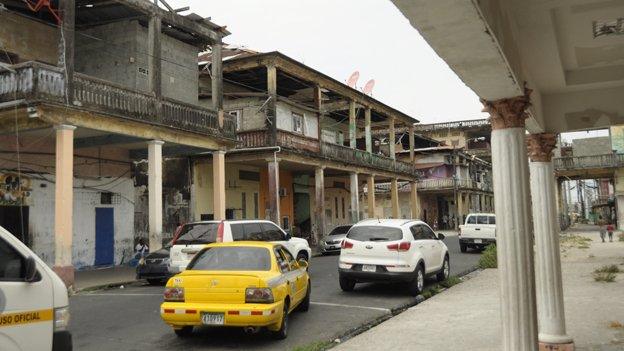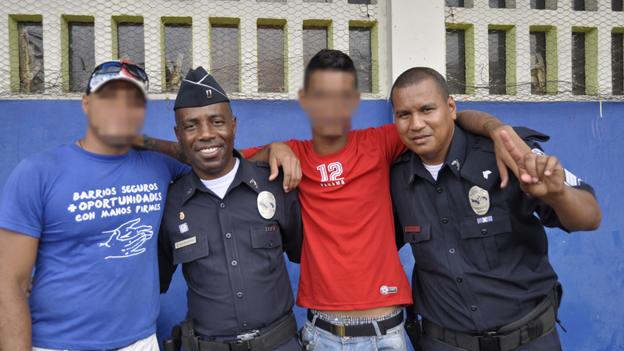Panama murder rate drops by 21%
- Published

The fall in the rate is attributed to a programme offering ex-gang members vocational training
Panama's murder rate has dropped by 21.4% in the first nine months of 2015 compared to the same period last year, official figures suggest.
In Colon, Panama's most murderous city last year, the number of homicides more than halved, according to figures by the security ministry.
Officials say a programme to rehabilitate gang members has been key in driving the figure down.
But a poll suggests the perception of insecurity in Panama remains high.
Panama does not have as serious a gang problem as other Central American nations such as Honduras and El Salvador.
But Panamanian gangs are believed to be behind the majority of the murders committed in recent years and also play a key part in drug trafficking.
Security Minister Rodolfo Aguilera says a programme offering gang members an amnesty and vocational training to lure them away from crime has been instrumental in reducing homicides in 2015.
He says that across Panama, 100 fewer people were killed between January and September of this year than in the same period in 2014.

Panama homicide figures
Jan-Sept 2014: 468 murders
Jan-Sept 2015: 368 murders
Rate per 100,000 inhabitants Jan-Sept 2014: 12.0
Rate per 100,000 inhabitants Jan-Sept 2015: 9.3

The biggest drop was in the port city of Colon, where all of the city's gangs signed up to the rehabilitation programme.

Colon on Panama's Atlantic coast is notorious for its high homicide rate
However, the fall in the murder rate has not been reflected in Panamanians' perception of security, a poll suggests.
Sixty-seven percent of Panamanians polled by Ipsos Panama said that they felt more insecure rather than less.
Officials say the discrepancy between the growing perception of insecurity and the falling murder rate may be down to the fact that while the poll was published in September, it was conducted as far back as December before the fall in homicides was registered.
The poll also measured insecurity in general, and not just murders.
One in five of those polled said they had become a victim of crime in the past 12 months, the majority of whom had suffered theft.
- Published13 May 2015
